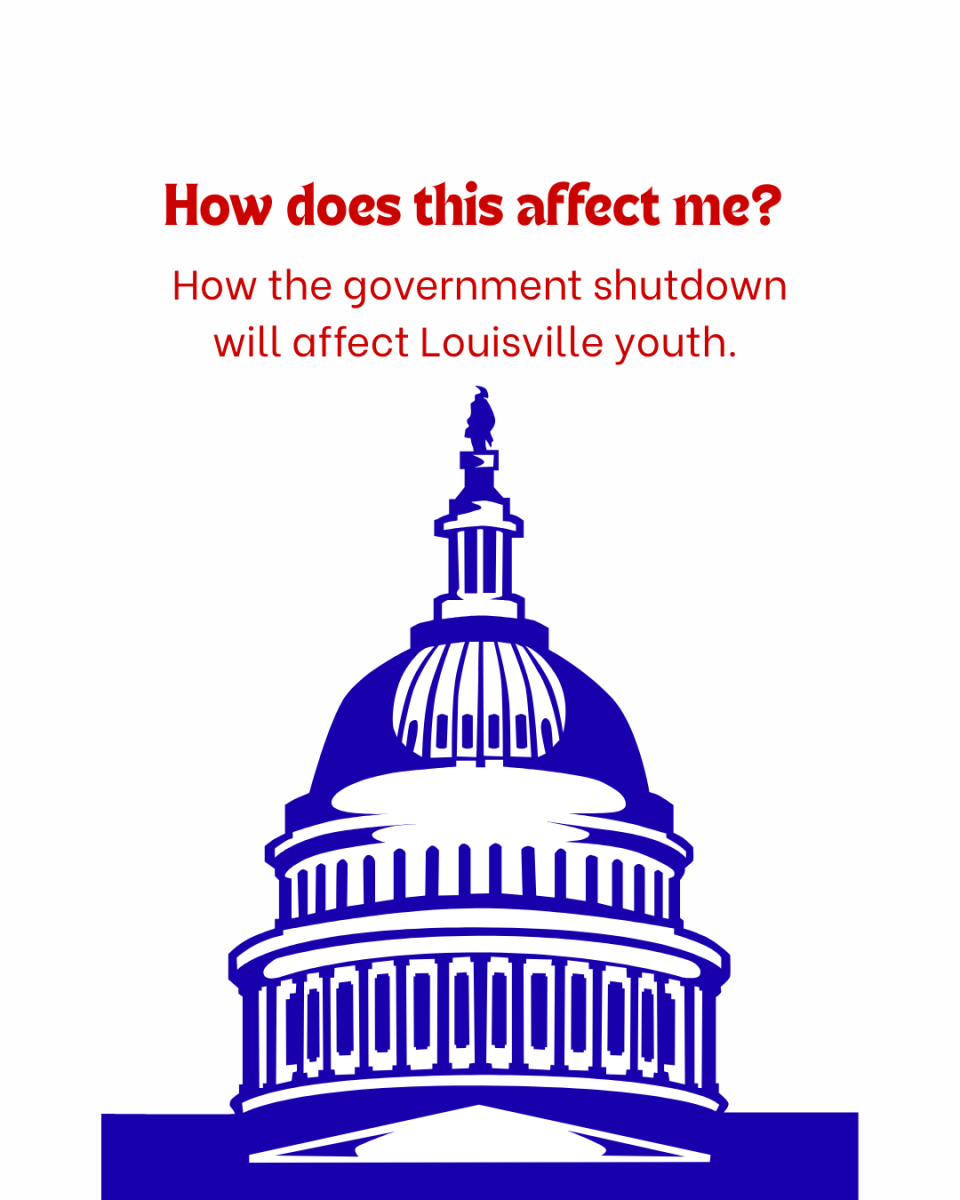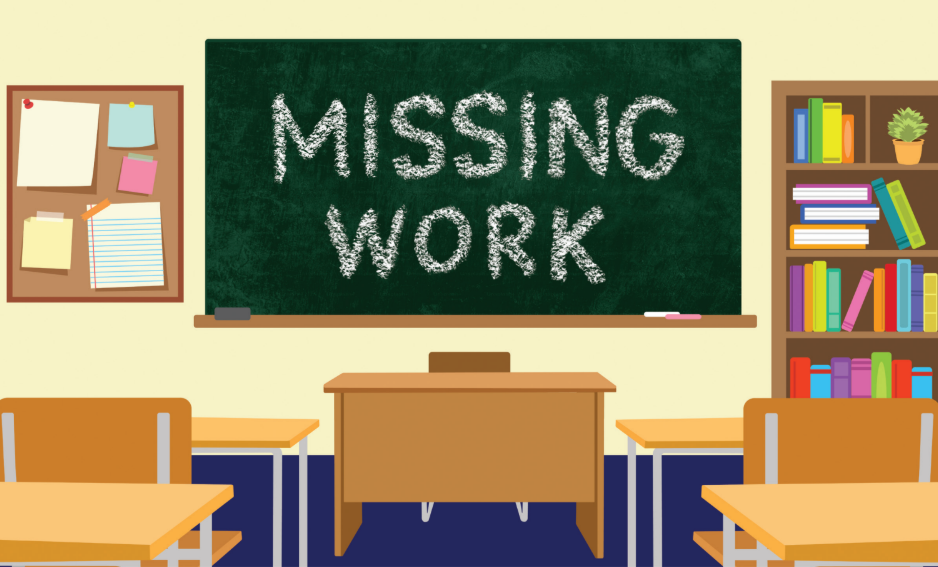I was 11 years old the first time I rode the TARC. The haul from my home in the East End to Noe Middle School became too much for my parents in the midst of their busy lives and work schedules, so we made plans for the after school trek to my community theater to include the TARC bus.
With a notebook in my lap and pencil in hand, I sat with my brother and sister — twins, a year older than me — scribbling down directions on how to travel across the city. My dad read my brother the street names — he was always the best with directions — and my sister and I noted important landmarks that would ensure we knew how to get from point A to point B.
I told some of my friends that I took the TARC after school and they were impressed. It felt like such a grown-up thing to do, to ride a bus with other adults without my parents.
What I didn’t realize at the time was that there were students just like me who rode the TARC bus to get to their magnet school, and that there would likely be even more in the future. I now see my “big girl” activity as an out of touch experience compared to the thousands of kids across the district who may resort to TARC routes after JCPS cut busing to all magnet and traditional high schools, with the exception of Central and Western. But this story isn’t about TARC, it’s about the students who have become collateral damage in one of JCPS’ numerous transportation controversies.
Student Perspectives
I was assigned to write this article on the issue of transportation cuts. In our February brainstorm, the On the Record newsroom circled a few main points: why the decision is controversial, when it would be made, and what could be done.
This article has proven to be as difficult to write as it is to comprehend. From sorting through decades of research to accounting for thousands of people across our city who will be impacted, it has been easy to get lost in the mound of information. The fact that so many students would lose their main form of transportation has been the only thing to keep me focused. Such a major decision impacting Louisville’s youth is being made and reported on by major news outlets who view the issue through the eyes of adults. Student perspectives are essential, and lacking, in a decision directly impacting us.
“I think sometimes the people who are making these decisions, they just need to hear perspectives from the students as well,” Trinity Evanson, 17, said in a March interview prior to the JCPS board officially deciding to cut busing. “They don’t really take account of that.”
Evanson, a junior at duPont Manual High School, worked toward attending the state’s highest ranked school for years. When she heard that busing to magnet schools may be completely cut in the 2024-2025 school year, she was shocked.
“I was in the car with my dad and I was like, ‘Do you hear this? This is absolutely insane,’” Evanson said.
Although she can sometimes rely on her parents, there will inevitably be days next school year where she will scramble for a ride or simply have no way to get to or from school.
“I need to be able to go to school every single day,” Evanson said. “I can’t just be like, ‘Oh yeah, I have to miss today because my parents can’t take me.’”
An Ongoing Issue
Evanson represents one of thousands of kids across the district who will be left without guaranteed transportation to and from school. A decision this major warrants the question of its necessity. Ultimately, the change was prompted by a shortage of bus drivers, resulting in a lack of buses and routes, leading to an increased number of students arriving late to school or waiting hours for their buses daily.
The issue is not unique to JCPS — the bus driver shortage is severe across the country. The National Education Association reported that in September, there were approximately 192,400 bus drivers working in K–12 schools, down 15.1% from September 2019. But as the 30th largest school district in the country with almost a fifth of its students attending magnet schools, JCPS differs from other districts in the number of students that need busing.
JCPS created magnet programs in the 1970s to diversify schools and combat white flight, which was the large-scale relocation of white people from urban to suburban areas as urban areas became more diverse. The district decided the value of magnet programs was worth the extra transportation costs, until recent busing shortages.
JCPS’ lack of bus drivers is not a new dilemma — the district has been battling the issue for years. In March 2023, the board announced new start times with hopes that assigning more routes per driver would alleviate problems resulting in shortages. Additionally, the district hired AlphaRoute, a software company out of Massachusetts, to redraw routes and help bus drivers amidst the shortage, with the help of AI.
However, these attempts backfired and caused the district to cancel eight of the first nine days of school. They faced intense backlash over the ongoing and worsening transportation issue, caused by a lack of bus drivers, new routes, and a new system of delayed school start times.
James Craig, vice chair of the JCPS Board of Education, highlighted the transportation crisis. In my February interview with him, he revealed that in October 2022, there were 18,769 total late students.
“It will be 101,000 in 2023 for the same month,” Craig said. “So five times worse. You remember last year —”
“I’m sorry,” I interrupted, out of utter shock. “You said how many times worse?”
“Five times worse.”
“Five times worse?” I repeated.
“Yeah,” Craig said with a laugh at the absurdity of the situation. “It’s pretty terrible.”
To put these numbers into perspective even more — students have lost over 1.3 million minutes of instruction. There are over 5,000 students late per day. Nearly every day at my high school, duPont Manual, at least one bus is announced over the intercom to expect a near three-hour delay for dismissal.
After my February meeting with Craig, my story team, members of the community, and I awaited the meeting in which the decision to cut busing to magnet and traditional schools would be made. The board scheduled the vote for March 5, but shortly before, they voted to delay the decision. With our story deadline approaching, we anxiously waited until March 26, the next scheduled meeting.
Transportation, Segregation — JCPS
In the meantime, we discovered that JCPS is no stranger to the link between transportation and segregation.
In the 1954 landmark case, Brown v. Board of Education, the Supreme Court ruled that racial segregation in public schools was unconstitutional.
While this decision was monumental, many white families still discovered ways to avoid desegregation by moving their students to other predominantly white school systems. Because of this, a judge ordered the districts to merge in 1974 to allow one district to integrate the population. Also part of this ruling was mandatory busing, which would require white students in predominantly white areas of town to be bused to schools in predominantly Black areas of town and vice versa. This way, the geographical segregation caused by white flight couldn’t be reflected in the demographics of neighborhood schools. Over the next decade, Louisville would become nationally recognized for its public school desegregation efforts surrounding busing.
However, ever since major pushes to spur integration in the 70s, the courts have lessened the prioritization of diversifying public schools. In 2004, JCPS was involved in a major court decision forbidding making assignments based entirely on race and gender when placing students in schools.
Under Superintendent Marty Polio’s leadership, JCPS introduced theSchool Choice Plan. This gives students, specifically in the West End, the option to attend a school close to home or further away. This lessened the burden of West End residents, who have a higher Black population, to travel to white neighborhoods in order to balance the diversity of schools.
That’s the short version of decades of lengthy issues plaguing our school district — issues that seemingly won’t go away. From kids waiting multiple hours per day to simply get to school and back, to the returning issue of segregation, I — and many others — am left with one question: what is going on with our district that prevents these massive issues from being solved?
There are, of course, factors others can point fingers at: the size of our district and lack of support from our state legislature are two places people seem to start. However, this hasn’t gotten us anywhere yet and doesn’t help magnet students now.
Fear the Sting
On March 26, my assignment team and I attended the rescheduled board meeting at the JCPS Van Hoose Center. Surrounding the entrance were dozens of protestors and news reporters. A sea of yellow and black t-shirts — the colors of Central High Magnet Career Academy — were met by two police officers standing at the front entrance. Even though we were half an hour early, another attendee told us we might as well go home. He said that they weren’t allowing any more people inside.
Already?
This didn’t stop a crowd from forming and speaking their mind. A large group of students, teachers, and parents from Central High School were gathered outside the meeting. Above the heads of the crowd of supporters was a sign, hoisted by Central junior Anaya Coleman, 17, that read “SAVE 1130 — NO BUS NO US — FEAR THE STING.”
Central High School is the district’s oldest historically black school — the famous alma mater of Muhammad Ali — and only other all-magnet school in JCPS besides Manual. The word “sting” references the school’s mascot, a yellowjacket, and “1130” refers to 1130 W Chestnut Street, the school’s address.
“I decided to come out today so I can use my voice and show off what my school can do,” Coleman said, who is part of Central’s Academy of Innovation magnet. “We have a laser cutter and I decided, well —a whole bunch of people — decided to make signs, so I made a sign.”
Angelina Abello Licea, an 18-year-old Central senior, worried about the impact on her younger brother, a sophomore in the Academy of Innovation.
“He fought his way to get to this program, really. The program has given him a lot of opportunities as a student,” Abello Licea said before the board’s final decision. “I really don’t want him to have to move schools.”
At the time of the interview, the students didn’t know that Central would be excluded from the busing cuts, and even though she won’t be attending next year, Abello Licea’s brother relies on busing to get to Central.
I also talked to Joe Gutmann, the director of the Law & Government magnet program at Central
“Imagine being a senior or an upcoming senior being told, ‘Oh, next year you have no transportation and you’d have to transfer to a new school,’” Gutmann said. “That’s like pulling the rug out from under you. And that’s wrong.”
Chris Kolb, a member of the JCPS board, has seen and felt the impacts of JCPS’ busing issues as both a board member and a parent.
“I’m the parent of a magnet school child who rode the bus on the first day and didn’t after that,” Kolb said. “And we carpool, thankfully. We have some people we know at the school, so we’re able to take turns, but it’s a major inconvenience.”
But not every family is as lucky as Kolb’s — especially those who don’t have alternative transportation.
“I would probably try to find another way,” Evanson said. “But it’s just difficult when there’s not a lot of people that live there that go to the same school.”
I talked to several students from Central outside of the meeting. Unable to enter the building due to the sheer size of the crowd, dozens of others watched live streams of the meeting on YouTube. My team and I saw students huddle around a phone and raise it to their ears, anxiously waiting to hear if some of them would be able to remain at Central for the rest of their high school careers.
After two and a half hours of waiting in the rain, the board decided to postpone the decision. Again. This time, they scheduled it for April 16.
I’ve found it hard to ignore my personal annoyance with the decision delays and how they have impacted my upcoming story deadline. However, I know my annoyances don’t compare to the students and their families who will be directly impacted by the decision.
On April 10, I learned that, after already delaying the transportation decision twice, the board had called for a special meeting that night to end the anticipation once and for all.
As the only board member opposed to delaying the vote at the March 26 meeting, Craig was eager to make a decision fast. When I initially spoke to him in February, he didn’t make his stance on the decision clear.
“The Board of Education has to choose between that terrible situation and the existing terrible situation,” Craig said. “Where students across the county — because we have too many routes — are showing up late every single day to many more schools than just the 20 that are affected.”
As the meeting approached, his perspective became clearer. James told several news outlets that he would vote “yes” to cutting buses to magnet high schools, and he would advocate for this decision to be made with haste.
Due to the publicity and large crowd of protestors at the March 26 meeting, they called the special meeting to limit the number of people that would show up.
Even though I was just rewatching the livestream, I could sense the tension over the decision about to be made. Verbal disputes between parties pushing for different votes made the meeting a riveting but uncomfortable watch.
Craig emphasized the desperate need for a decision as quickly as possible.
“It would be wholly negligent when our transportation department is telling us that they need a decision to get this right next year for us to continue to sit on our hands,” he exclaimed. “We have to fix the problem that is in front of us today.”
Still, some opposed Craig’s urgency.
“It should be understood that this board is taking this vote and has called this meeting 24 hours before a scheduled community REAP,” said Corrie Shull, the chair of the board.
A REAP is a Racial Equity Analysis Protocol, a process that evaluates equity in schools. It helps ensure fairness for lower income students in JCPS, and REAP’s verdict on the transportation decision was highly anticipated. However, calling for a vote before the REAP could be conducted was not the most popular decision.
In a final, desperate attempt for more review, board member Joe Marshall called for another delay of the vote, but had little support..
After months of waiting by families with students who attend or plan to attend magnet schools, the board called for the vote the district has dreaded. I watched grimly as the majority of the members, entirely white, raised their hands to vote yes to JCPS’ new transportation plan — a plan that will prevent some deserving students from going to schools they dream of attending.
Frustrations with JCPS extend to the lack of youth voices in decision making.
“We should be asking you guys what the best solution is,” said Edward Miller, head fetal surgeon at UofL, who spoke at the March 26 board meeting before the vote was again delayed. “It shouldn’t be a bunch of adults with old gray hair that are making decisions that affect you guys.”
However, the youth that did show up to the meeting weren’t entirely ignored.
Despite the attempt by the board to prevent people from gathering at the special meeting, people from Central showed up just like they had on March 26 — and not for nothing. This new, ratified plan differs from Polio’s original proposal to cut transportation for all magnet and traditional schools. The new plan, which will be enacted in the 2024-2025 school year, cuts busing for magnet and traditional high schools who fall below a 75% free and reduced lunch threshold. The schools not included in this are Western and Central high schools. The board had listened, and while many schools will be affected by busing cuts, Central students used their voices to make sure they are not one of them.
As a student at Manual, busing will be entirely cut for all students at my school, except for Exceptional Child Education (ECE) students and students affected by homelessness, as defined by the McKinney-Vento Act.
The demographics of the board’s vote were telling, with it being divided on racial lines. Corrie Shull, Strange, and Joe Marshall — the Black board members — voted no. The four remaining board members: James Craig, Sarah McIntosh, Chris Kolb, and Linda Duncan — all white — voted yes.
Among the magnet and traditional high school students that will be impacted, JCPS’ Black students will be disproportionately affected. On March 25, JCPS Spokesperson Carolyn Callahan reported that about 6,500 of the 8,000 Black students who currently attend JCPS magnet and traditional schools ride the bus. Some of these students will have to scramble for another way to their magnet or traditional high school, or must drop their school entirely.
As of now, the board and community seemingly only share one emotion: outrage. Both Marshall and McIntosh have announced they will not be seeking reelection. After the meeting, JCPS Chief Equity Officer and Kolb engaged in a heated discussion which prompted police officers to approach them and their conversation to end.
What’s Next?
There are several solutions JCPS proposed to get kids who are left without transportation to and from school. For one, JCPS plans to cut down on the number of different start times from nine to three — 7:30 am, 8:40 am, and 9:40 am. This will allow more routes to be added to bus drivers’ schedules, making up for the loss of routes to magnet schools.
The board is still trying to figure out how to best support magnet students who rely on buses.
“We’re gonna continue to work with TARC to provide as many options as possible,” Kolb said. “Unfortunately, you know, if students do have to transfer, we’re gonna make that as easy as possible.”
With TARC announcing driver layoffs, city officials hope they will seek employment as drivers for JCPS.
Kolb also mentioned that JCPS students will have free access to TARC at any time to address concerns over how lower income families will pay for public transportation to replace free busing. Still, some students may live miles away from the nearest TARC stop.
The board has also heard plans about potentially providing stipends to parents of magnet students who qualify for free and reduced lunches $10 per school day, and $5 per school day for parents of other students. There have also been proposals to pay any parent who transports their student to and from a magnet or traditional school.
Although the public can take some comfort in the proposals of these plans, they are only proposals — temporary solutions to a problem that will impact thousands of students.
“Come together with a real plan, you know?” Gutmann said. “Don’t say, ‘Well, you know, we’re talking to TARC and we’re, you know, we’re considering other possibilities of paying parents.’ If you’re going to have a real plan, have the plan in place and guarantee that this is what’s going to happen.”
Accountability for Our Advocacy
When I think about the students at my school who will lose access to busing, I think back to the March 26 board meeting before the transportation decision was made. During our two and a half hour wait, we were approached by a Manual alum, Taylour Champion, who is now a teacher in the nursing program at Central.
She asked us where Manual students were, since like Central, Manual is an all-magnet school. But where we differed from Central was our student advocacy. In a sea of Central students, I only noticed a few Manual students in attendance. And even then, most of us were there to report on the meeting, not to gather in protest like those from Central.
Where were Manual’s students? What about Male? Fairdale? The fact is, Central’s students made their voices heard and advocated for the change they’d like to see. They compiled statistics and student accounts and fought for their right to have busing.
“At Central High School, it only took one, and we all would’ve been standing here and we all would’ve been fighting for our ability to be educated,” Champion told us.
An issue as overwhelming and systemic as racial equity in JCPS is difficult to tackle, but it must be confronted. As young people in Louisville, we are confronting both the past and our future in public schools.
The opportunity to attend magnet schools, both in middle and high school, has given me formative life experiences — most rewarding has been the opportunity to learn from students of all backgrounds.
In a few years, we may see the environments of our magnet schools flipped entirely upside down. If we continue in the same direction, with a lack of student advocacy and a worsening bus driver shortage, some magnet programs could end due to low enrollment. Students will have fewer opportunities to learn from a diverse group of their peers, a detrimental loss for a new generation of JCPS students.
Central has proven that using our voices is our best hope of reversing this decision and preserving diversity in education. But that requires that youth believe that diversity is worth fighting for.













